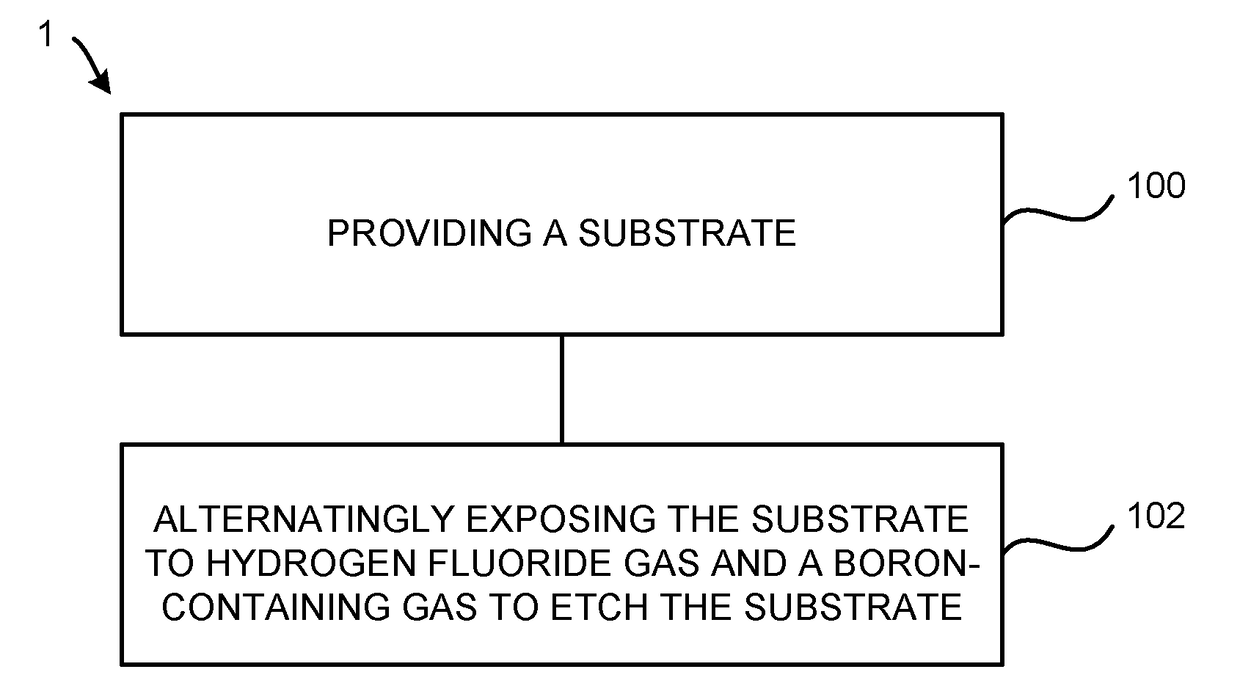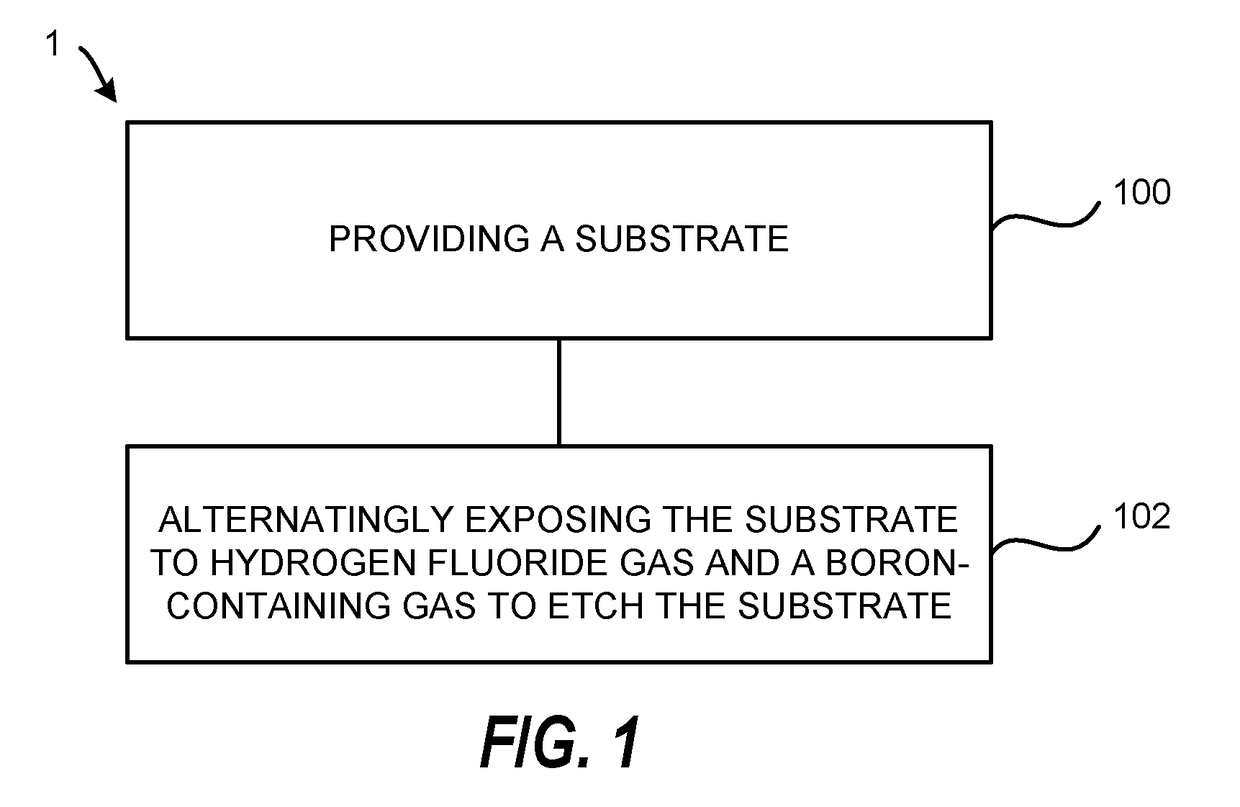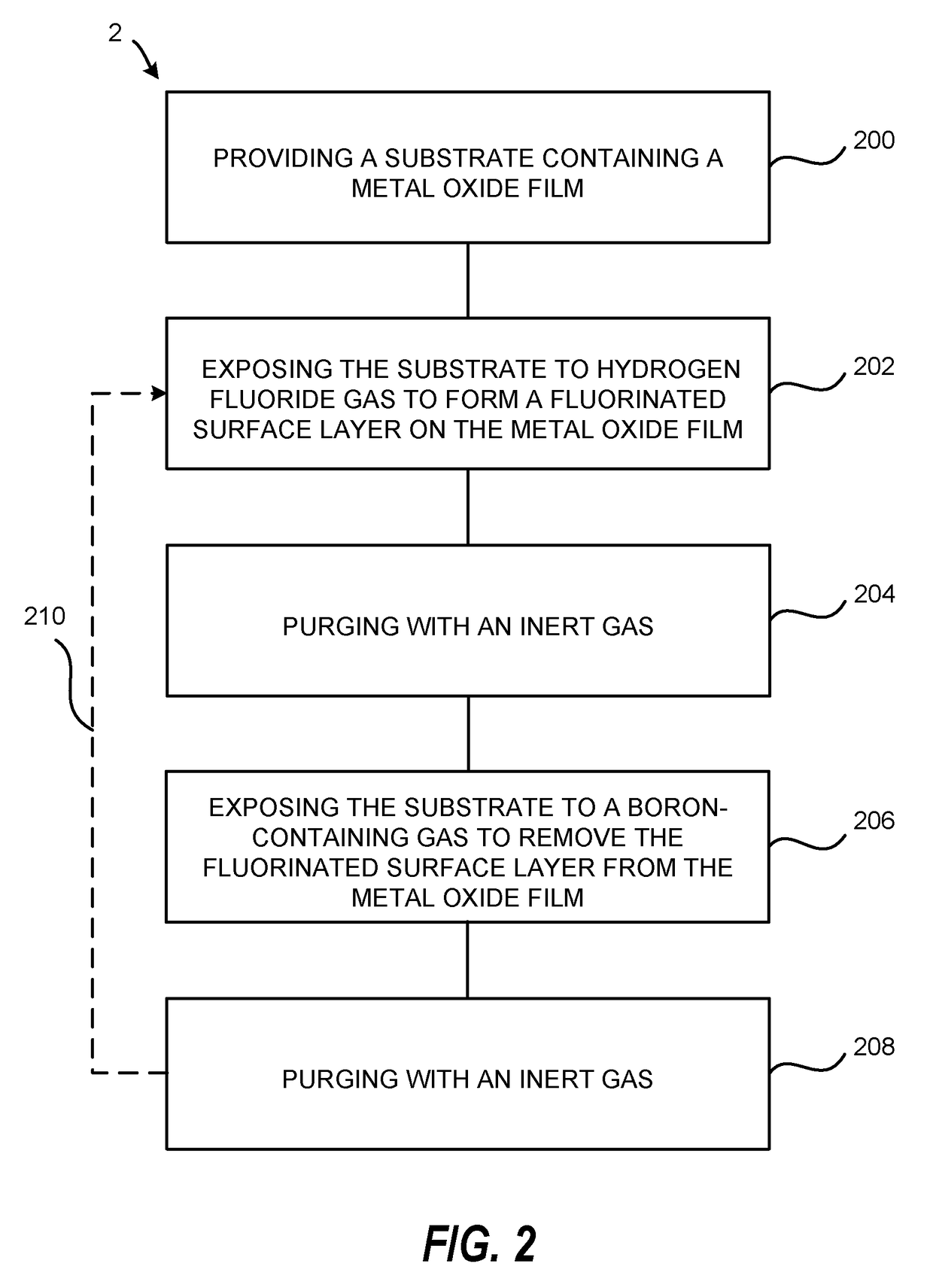Atomic layer etching using a boron-containing gas and hydrogen fluoride gas
a technology of hydrogen fluoride and boron-containing gas, which is applied in the direction of hydrogen fluoride, boron/boride, electrical equipment, etc., can solve the problems of becoming a significant challenge in accurately controlling the etching of fine features, self-limiting and atomic scale processing methods such as ale becoming a necessity
- Summary
- Abstract
- Description
- Claims
- Application Information
AI Technical Summary
Benefits of technology
Problems solved by technology
Method used
Image
Examples
Embodiment Construction
[0015]Developing advanced technology for advanced semiconductor technology nodes presents an unprecedented challenge for manufacturers of semiconductor devices, where these devices will require atomic-scale manufacturing control of etch variability. ALE is viewed by the semiconductor industry as an alternative to conventional continuous etching. ALE is a substrate processing technique that removes thin layers of material using sequential self-limiting reactions and is considered one of the most promising techniques for achieving the required control of etch variability necessary in the atomic-scale era.
[0016]ALE is often defined as a film etching technique that uses sequential self-limiting reactions. The concept is analogous to atomic layer deposition (ALD), except that removal occurs in place of a second adsorption step, resulting in layer-by-layer material removal instead of addition. The simplest ALE implementation consists of two sequential steps: surface modification (1) and r...
PUM
 Login to View More
Login to View More Abstract
Description
Claims
Application Information
 Login to View More
Login to View More - R&D
- Intellectual Property
- Life Sciences
- Materials
- Tech Scout
- Unparalleled Data Quality
- Higher Quality Content
- 60% Fewer Hallucinations
Browse by: Latest US Patents, China's latest patents, Technical Efficacy Thesaurus, Application Domain, Technology Topic, Popular Technical Reports.
© 2025 PatSnap. All rights reserved.Legal|Privacy policy|Modern Slavery Act Transparency Statement|Sitemap|About US| Contact US: help@patsnap.com



